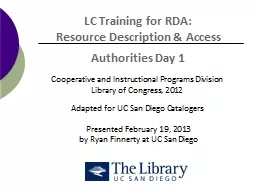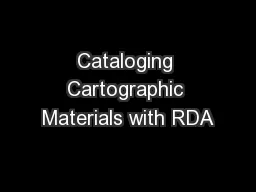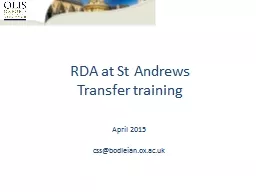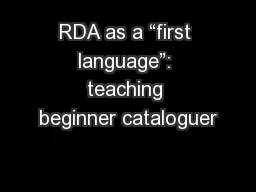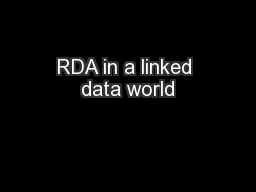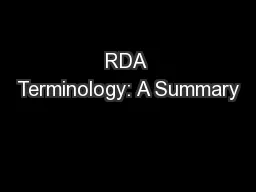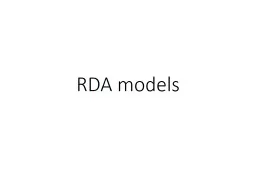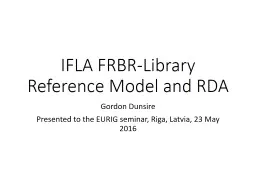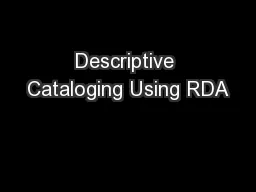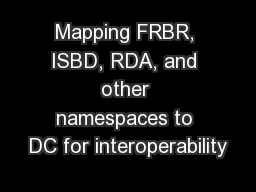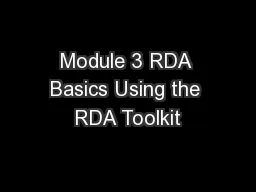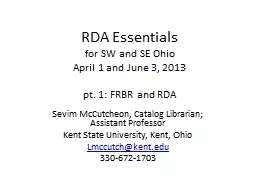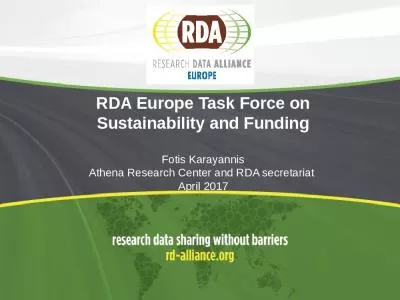PPT-LC Training for RDA: Resource Description & Access
Author : cheryl-pisano | Published Date : 2018-11-07
Authorities Day 1 Cooperative and Instructional Programs Division Library of Congress 2012 Adapted for UC San Diego Catalogers Presented February 19 2013 by Ryan
Presentation Embed Code
Download Presentation
Download Presentation The PPT/PDF document "LC Training for RDA: Resource Descriptio..." is the property of its rightful owner. Permission is granted to download and print the materials on this website for personal, non-commercial use only, and to display it on your personal computer provided you do not modify the materials and that you retain all copyright notices contained in the materials. By downloading content from our website, you accept the terms of this agreement.
LC Training for RDA: Resource Description & Access: Transcript
Download Rules Of Document
"LC Training for RDA: Resource Description & Access"The content belongs to its owner. You may download and print it for personal use, without modification, and keep all copyright notices. By downloading, you agree to these terms.
Related Documents

